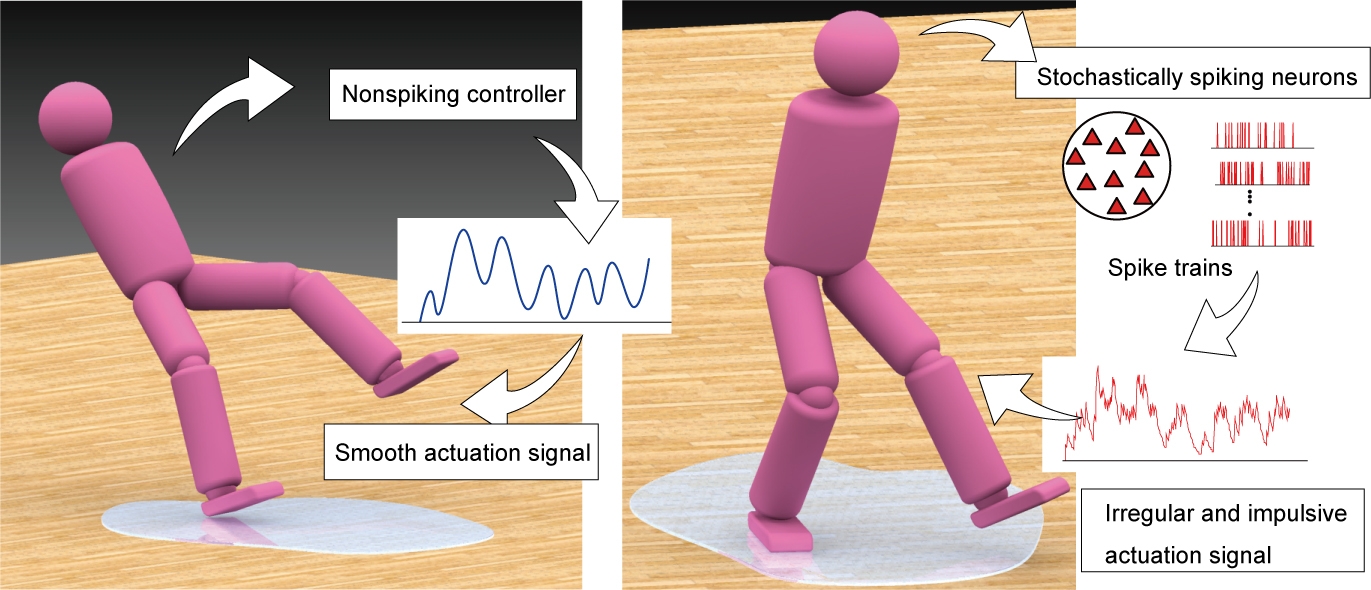Spiky neural networks Controlled noise in neural networks improves robots’ ability to adapt

Engineering can take cues from nature, but researchers can also use technology to better understand some natural phenomena. In a recent experiment, researchers aimed to explain the adaptable behavior of biological neural networks through the use of artificial ones. They found, counterintuitively, that adding some noisy spikes into the otherwise smooth control signal of a robot’s neural network can actually improve its stability of motion. Such behavior mimics what is seen in biological neurons. This research could be especially useful in improving how robots and other systems can adapt to unfamiliar environments.
Robots are increasingly useful in the modern world, but something that holds back their potential is their adaptability to unfamiliar scenarios and environments. Many robots can be controlled by some form of artificial neural network system which mimics how biological organisms perceive their world and move around within it. However, these systems need to be trained, and the farther away a robot gets from a particular training scenario, the harder time it has in operating correctly. Training also takes time, so a system that can adapt without excessive training is highly sought after by engineers.
“In the field of robotics, it is common to use smooth, clean signals to train a neural network in controlling the motion of a robot,” said Project Researcher Shogo Yonekura. “Natural biological neural networks often exhibit irregular impulses, or spikes, which can generate adverse effects. So it made sense to avoid such traits in artificial neural networks. But we’ve experimented with incorporating such spikes into our control systems and it actually helps robots adapt to sudden environmental changes or unexpected external perturbations.”
To explore this idea, Yonekura and Professor Yasuo Kuniyoshi, both from the Intelligent Systems and Informatics Laboratory, developed a platform to inject strictly defined spikes into the control signals of an artificial agent running on a computer. This agent was given the form of a humanlike biped. Left to its own devices, the agent’s standard smooth control signals meant that when it came across an unfamiliar situation — for example in this experiment, a slippery puddle — the agent would fall over. But when spikes were added in a controlled manner to the signals, the slightly irregular and impulsive signals that resulted actually gave the agent better balance, thus the ability to handle unfamiliar scenarios.
“There is still much work to do in order to find exactly what kinds of spikes may work best for different mechanisms and in different contexts,” said Yonekura. “But our finding implies that spiking neurons may be the core mechanism to expressing the adaptability of biological systems in artificial agents like robots. I hope we see our work used to make robots more useful in a wider range of tasks and situations.”

Papers
Shogo Yonekura and Yasuo Kuniyoshi, "Spike-induced ordering: Stochastic neural spikes provide immediate adaptability to the sensorimotor system," PNAS 117 (22) 12486-12496: June 2, 2020, doi:10.1073/pnas.1819707117.
Link (Publication )
)
Related links
- Graduate School of Information Science and Technology

- Intelligent Systems and Informatics Laboratory






